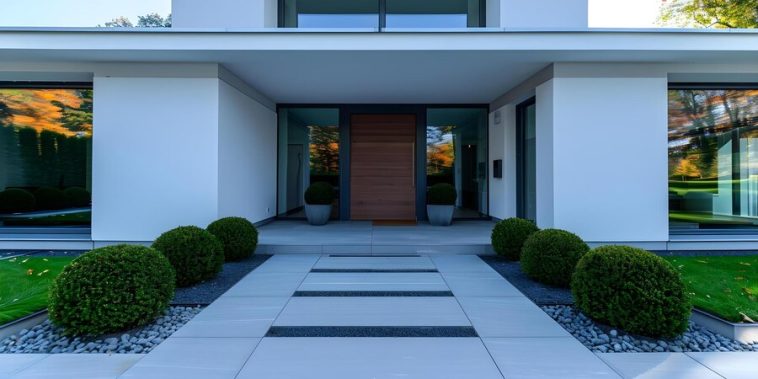Entryways and pathways serve as the welcoming gestures of a space, guiding visitors into and through a landscape while setting the tone for the experience ahead. Whether in residential gardens, public parks, or urban spaces, these elements are crucial for functionality, aesthetics, and user interaction. Here’s a closer look at key considerations and approaches to designing compelling entryways and pathways in landscape architecture.
1. Purposeful Design: Aligning Function with Form
A successful entryway or pathway starts with a clear understanding of its purpose. Is the pathway designed for leisurely strolls, quick transit, or accessibility? Is the entryway intended to be grand and imposing or subtle and inviting? Understanding the functional and contextual requirements of the space ensures the design meets the needs of its users while maintaining harmony with its surroundings.
2. Materials Matter: Blending Beauty and Durability
The choice of materials is pivotal in pathway and entryway design. Options like stone, brick, wood, concrete, and gravel each offer unique aesthetic and functional qualities. For instance:
- Stone pathways evoke a natural and timeless feel, ideal for gardens.
- Concrete offers versatility and durability, suited for urban environments.
- Gravel provides a rustic, cost-effective option but may require regular maintenance.
Material selection should balance durability, safety (slip resistance), and compatibility with the site’s overall aesthetic.
3. Shape and Layout: Navigating Movement
The shape and layout of a pathway influence how people move through a space. Curved pathways can add an element of surprise, leading visitors to explore, while straight paths create a sense of direction and purpose. Designers must also consider:
- Width: Wide pathways accommodate multiple users, while narrower paths create intimacy.
- Edges: Clearly defined borders, such as hedges, lights, or raised edges, enhance usability and safety.
4. Integrating Lighting for Function and Atmosphere
Lighting transforms pathways and entryways, enhancing their functionality and ambiance. Low-level lighting or embedded LED strips along the edges improve visibility and safety, while decorative fixtures can add an artistic flair. Solar-powered lights are an eco-friendly option, reducing energy consumption while providing effective illumination.
5. Plantings: Enhancing the Journey
Landscaping around pathways and entryways enhances their appeal and helps integrate them into the larger environment. Plants can be used to:
- Frame entryways: Trees, shrubs, or flowering plants create a natural welcome.
- Guide movement: Low hedges or flowerbeds can subtly direct users along the path.
- Create sensory experiences: Fragrant plants or rustling grasses add a multisensory dimension.
6. Accessibility and Sustainability
Pathways should be designed to accommodate all users, including those with mobility challenges. ADA-compliant slopes, handrails, and non-slip surfaces ensure inclusivity. Sustainability is also a growing priority, with permeable materials, rainwater management systems, and native plantings reducing environmental impact.
7. Inviting Entryways: The First Impression
The entryway is the threshold between the outside world and the landscaped space. Its design should convey the theme or story of the area. Gates, archways, or even simple signage can mark the entryway, creating a sense of anticipation and curiosity.
8. Cultural and Historical Context
In some cases, pathways and entryways need to reflect cultural or historical elements. Using traditional materials or patterns can preserve the integrity of the space’s heritage, blending modern functionality with timeless appeal.


